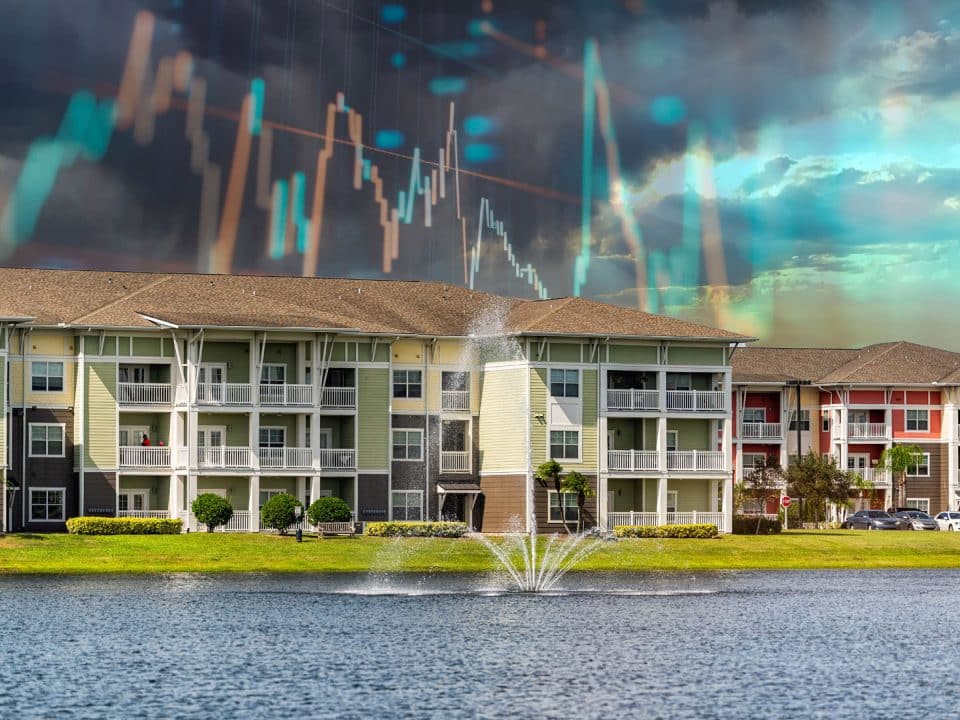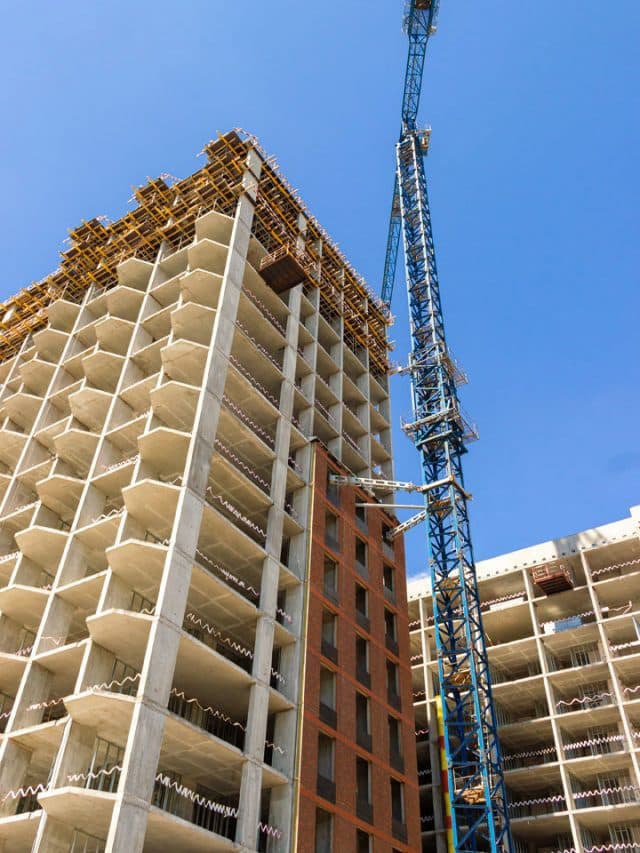
Ups and Downs for Apartments
Over the last four years, the commercial real estate market has undergone a series of major changes, marked by three periods. First, uncertainty: In 2020, the world was rocked by the COVID-19 pandemic and subsequent lockdowns that brought global economies to a virtual standstill. The real estate industry was among the hardest hit as government restrictions forced office employees to work remotely, and limited people from shopping and traveling. Second, a rebound: In 2021, the picture brightened as the pandemic lessened and jurisdictions lifted lockdowns. An ensuing bull market lifted the NCREIF Property Index (NPI) to a peak of 6.1% in the fourth quarter in 2021 (Figure 1), led by the apartment and industrial sectors with a total return of 6.8% and 13.3%, respectively (Figure 2), according to the index from the National Council of Real Estate Investment Fiduciaries. Even the retail and office sectors, which had been suffering negative quarterly returns marched into positive territory, reaching a peak of 2.3% and 1.9%. Third, the burden of high interest rates: The good times faded in 2022 as inflation surged and the Federal Reserve Board launched a series of interest rate hikes to slow the economy, which put the brakes on the real estate market and sent NPI returns plunging to negative 3.5% in the fourth quarter of 2022.
Source: NCREIF Property Index
Source: NCREIF Property Index
By now this is a familiar story. What’s interesting is that to varying degrees all the four major real estate categories followed roughly the same trend line: A sharp drop, a big spike and a fall off. It doesn’t matter if you look at the trends for the relatively healthy apartment and industrial sectors or the struggling office and retail markets, all sectors rode the same roller coaster, indicating returns have largely been driven by the overall economic conditions.
The multifamily sector

The turns of fortunes seem particularly intriguing for the multifamily sector, which has been the star of the real estate market for more than a decade, particularly in the South, where increasing population gains and higher demand for housing has allowed property owners to ratchet up rents. Not only did multifamily properties outperform other sectors — except for industrial — the sector also fared better than the others during the downtown, albeit with a loss of 3.1% in total returns in the darkest three-month stretch — the fourth quarter of 2022. It’s also worth noting that the apartment sector has traditionally been a relatively stable performer, making it even more unusual to observe such negative returns.
This pattern of fall-rise-fall in the apartment sector can be seen not only in total returns but in the volume of sales transactions (Figure 3). As the economy recovered from the pandemic, sales volume peaked in the fourth quarter 2021, just as total returns. High levels of sales in the apartment market reflected higher demand and higher sales prices. But when interest rates rose and the economy slowed, sales volume began to decrease and property owners sold at lower prices, resulting in the negative returns.
Source: MSCI Real Capital Analytics
Comparing apartments in six key states

As with most real estate, performance is driven by local factors and it’s true with the multifamily market. Looking at a state level, many southern states outperformed not only the national average but also the traditional gateway states. We compared the total apartment returns in the states of Florida, Georgia, and Texas with California, New York, and Massachusetts. The states in the South fared better than the gateway states, with higher highs and more moderate losses (Figure 4). Florida led the way with a total return of 10.9% in the fourth quarter of 2021 and the most moderate loss in the fourth quarter 2022 at negative 1.4%. In comparison, Massachusetts, the best-performing gateway state, reached a high of 7.3% in third quarter of 2021 and fell to negative 4.1% in the fourth quarter of 2022.
Source: NCREIF Property Index
The southern states not only averaged higher total apartment returns they also experienced slightly higher volatility. The gateway states did not reach the same level of returns as the southern states; however, the gateway states maintained their returns further into 2022 before falling into negative territory. The southern states had an average standard deviation of total apartment returns of 3.6% while the gateway states had an average standard deviation of 2.8%. This volatility of returns in the southern states reflected a spike post-COVID before another quick drop in 2022 as interest rates rose.
Recognizing the lower volatility in total apartment returns in the gateway states, this is where the positives end. Looking at the of the total quarterly returns of each of the six states vs. the national average, it is immediately apparent that the southern states outperformed the national average across the board (Figures 5a and 5b). Florida was most notable: Over the 15 quarters starting in 2020, Sunshine State apartment returns never underperformed the national average. In contrast, even though Massachusetts generally performed better than California and New York, it still underperformed the national average in the majority of the quarters during the same period.
Source: NCREIF Property Index
Source: NCREIF Property Index
As we know, many factors influence apartment returns, including not only interest rates but job growth and the rate of new apartment construction. But population shifts have also undoubtedly been a major factor for the above-average performance of the southern states over the gateway states. In the first year after the pandemic, migration to southern and southwestern states picked up as population growth in the largest cities declined, according to the U.S. Census Bureau. Each of the three southern states notched population gains, with Florida leading the way with a 5% population increase. In comparison, the population of the three gateway states dropped during the same period, with New York’s falling the most with a 3.1% decline.
No doubt, increased housing demand in southern states contributed to an increase in apartment income returns; however, rising expense costs moderated income returns over time. Although increased housing demand in southern states is not directly related to higher total returns, this a factor that made apartments in the southern states a more attractive investment, and thus they have tended to sell at a premium over apartments in gateway states.
The year ahead
As the calendar turned to 2024, the prospects for multifamily investments seem to be trending upward after hitting a low in the fourth quarter of 2022. U.S. total apartment returns have registered two consecutive quarters of increased returns, though they remained unprofitable at negative 1.4% as of the third quarter 2023. The turnaround trend seems across the board, in southern states as well as gateway states, as the economy begins to adjust to current interest rates.
Real estate economists and researchers generally forecast an improving multifamily market this year. That’s not to say the picture is all sunshine and roses. In its 2024 U.S. multifamily outlook report, Yardi Matrix wrote, “Multifamily faces a mixed outlook in 2024. Property performance remains healthy for most apartments, but challenges will come from a wave of deliveries, rapid growth in expenses [and] a potential economic slowdown.”
If things are looking up, it’s most notably because of the all-important forecast for interest rates appeared positive. Last fall, the Federal Reserve Board paused hikes in its benchmark interest rate at 5.4%, and in December Fed policymakers signaled they expect to make rate cuts later this year. This is welcome news given that in July 2023 the effective Fed Funds rate reached its highest rate since February 2007. The pause in rate hikes, paired with the recent upward trend in apartment returns, could suggest that the market is adjusting to a new environment and is primed for growth.

Author:
Clayton Gardner is a University of Florida Nathan S. Collier Master of Science in Real Estate candidate.